-
 Bitcoin
Bitcoin $106,731.2224
-1.05% -
 Ethereum
Ethereum $2,444.9804
-1.20% -
 Tether USDt
Tether USDt $1.0003
0.01% -
 XRP
XRP $2.1882
0.09% -
 BNB
BNB $651.1435
-0.61% -
 Solana
Solana $148.3252
-2.09% -
 USDC
USDC $1.0000
0.01% -
 TRON
TRON $0.2787
0.55% -
 Dogecoin
Dogecoin $0.1598
-3.16% -
 Cardano
Cardano $0.5520
-2.43% -
 Hyperliquid
Hyperliquid $39.0960
-2.64% -
 Bitcoin Cash
Bitcoin Cash $516.9519
2.98% -
 Sui
Sui $2.7011
-2.95% -
 Chainlink
Chainlink $13.0582
-1.71% -
 UNUS SED LEO
UNUS SED LEO $8.9250
-2.53% -
 Stellar
Stellar $0.2359
-0.18% -
 Avalanche
Avalanche $17.3856
-3.73% -
 Toncoin
Toncoin $2.8095
-3.56% -
 Shiba Inu
Shiba Inu $0.0...01121
-1.95% -
 Litecoin
Litecoin $85.2795
-0.85% -
 Hedera
Hedera $0.1471
-2.15% -
 Monero
Monero $319.8004
1.12% -
 Dai
Dai $1.0001
0.01% -
 Ethena USDe
Ethena USDe $1.0001
0.02% -
 Bitget Token
Bitget Token $4.5344
-1.07% -
 Polkadot
Polkadot $3.3224
-2.96% -
 Uniswap
Uniswap $6.9697
-2.75% -
 Aave
Aave $266.1658
-2.25% -
 Pepe
Pepe $0.0...09414
-3.41% -
 Pi
Pi $0.4913
-3.29%
How do I sell Ethereum on Gemini?
To sell Ethereum on Gemini, log in, ensure your ETH is in your wallet, navigate to 'Trade', select ETH/USD, place a market order, and withdraw funds to your bank.
Apr 06, 2025 at 05:28 am
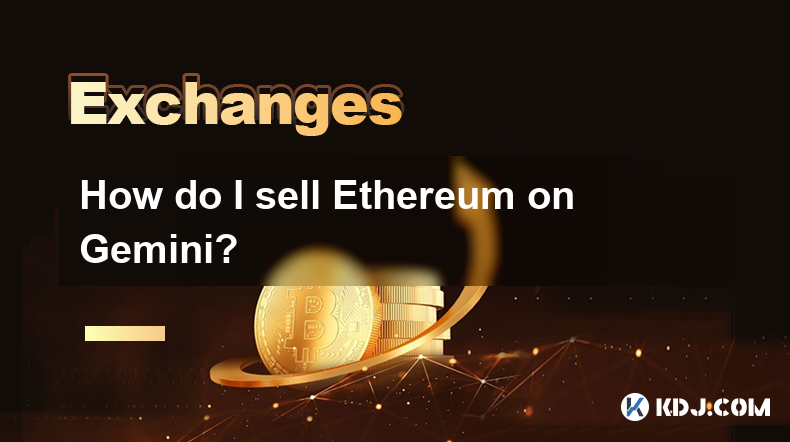
Selling Ethereum on Gemini involves a few straightforward steps that can be completed easily if you follow the process carefully. This guide will walk you through the entire procedure, ensuring you understand each step and can execute the sale smoothly.
Preparing to Sell Ethereum on Gemini
Before you can sell your Ethereum on Gemini, you need to ensure that you have a verified account and that your Ethereum is already deposited into your Gemini wallet.
- Log into your Gemini account. If you don't have an account, you'll need to sign up and complete the verification process, which can take some time depending on the level of verification you choose.
- Ensure your Ethereum is in your Gemini wallet. If you haven't yet transferred your Ethereum to Gemini, you'll need to do so before proceeding. Navigate to the 'Transfer' section, select 'Deposit into Exchange', choose Ethereum, and follow the instructions to send your Ethereum to your Gemini wallet.
Navigating to the Trading Section
Once your account is set up and your Ethereum is ready, you can proceed to the trading section of Gemini.
- Click on the 'Trade' tab at the top of the Gemini homepage. This will take you to the trading interface where you can buy and sell various cryptocurrencies, including Ethereum.
- Select the ETH/USD trading pair. This pair allows you to sell your Ethereum in exchange for US dollars. You can find this pair in the list of available trading pairs on the left side of the screen.
Placing a Sell Order
With the trading pair selected, you can now place your sell order. Gemini offers different types of orders, but for simplicity, we'll focus on a market order, which allows you to sell your Ethereum at the current market price.
- Choose 'Market' as your order type. This option is usually located at the top of the order form.
- Enter the amount of Ethereum you want to sell. You can input the amount in either Ethereum or the equivalent in USD. Make sure to double-check the amount to avoid any mistakes.
- Review your order. Before submitting, take a moment to review the details of your order, including the amount of Ethereum you're selling and the estimated amount of USD you'll receive.
- Click 'Sell ETH' to submit your order. Once you click this button, your order will be executed at the current market price, and your Ethereum will be sold.
Withdrawing Your Funds
After your Ethereum has been sold, you'll need to withdraw your funds from Gemini to your bank account.
- Navigate to the 'Transfer' section and select 'Withdraw from Exchange'.
- Choose the currency you want to withdraw (in this case, USD) and enter the amount you wish to withdraw.
- Select your bank account from the list of available withdrawal methods. If you haven't yet added a bank account, you'll need to do so by providing the necessary details.
- Review the withdrawal details and confirm the transaction. Depending on your bank, it may take a few business days for the funds to appear in your account.
Monitoring Your Transaction
It's important to keep an eye on your transaction to ensure everything goes smoothly.
- Check your transaction history in the 'Activity' section of your Gemini account. Here, you can see the status of your sell order and withdrawal request.
- Monitor your bank account for the incoming funds. If you don't see the funds within the expected timeframe, you may need to contact Gemini support for assistance.
Understanding Fees and Limits
Before selling your Ethereum on Gemini, it's crucial to understand the fees and limits associated with your transactions.
- Trading fees on Gemini vary depending on your trading volume and whether you're a maker or a taker in the transaction. You can find detailed information on Gemini's fee schedule on their website.
- Withdrawal fees may also apply when you transfer your funds to your bank account. These fees can vary based on the method and currency you're using.
- Transaction limits are in place to protect both you and Gemini from fraud. These limits can vary based on your account verification level and the type of transaction you're making.
Security Considerations
When selling Ethereum on Gemini, it's important to keep security in mind to protect your assets.
- Enable two-factor authentication (2FA) on your Gemini account to add an extra layer of security.
- Use strong, unique passwords for your Gemini account and never share them with anyone.
- Be cautious of phishing attempts. Always access Gemini through their official website and be wary of emails or messages asking for your login information.
Frequently Asked Questions
Q: Can I sell Ethereum for other cryptocurrencies on Gemini?
A: Yes, Gemini allows you to trade Ethereum for other cryptocurrencies, such as Bitcoin. To do this, simply select the appropriate trading pair (e.g., ETH/BTC) when placing your sell order.
Q: How long does it take to sell Ethereum on Gemini?
A: The time it takes to sell Ethereum on Gemini depends on the type of order you place. A market order is typically executed instantly, while a limit order may take longer if the market doesn't reach your specified price.
Q: What should I do if my sell order is not executed?
A: If your sell order is not executed, it could be due to a limit order not reaching the specified price or a lack of liquidity in the market. You can cancel the order and place a new one if necessary.
Q: Can I cancel a sell order on Gemini?
A: Yes, you can cancel a sell order on Gemini as long as it has not been fully executed. To do this, go to the 'Orders' section, find the order you want to cancel, and click the 'Cancel' button.
Disclaimer:info@kdj.com
The information provided is not trading advice. kdj.com does not assume any responsibility for any investments made based on the information provided in this article. Cryptocurrencies are highly volatile and it is highly recommended that you invest with caution after thorough research!
If you believe that the content used on this website infringes your copyright, please contact us immediately (info@kdj.com) and we will delete it promptly.
- Tether, Bitcoin, and the Public Listing Frenzy: A New Era for Corporate Crypto?
- 2025-07-02 04:30:12
- Token Yugijo, Coin Flips & Meme Coins: What's Hot?
- 2025-07-02 04:30:12
- Powell, Stablecoin Regulation, and Circle's Bold Move: A New York Minute on Crypto's Future
- 2025-07-02 02:30:12
- Ethereum Price, Tom Lee, and Bitcoin: A New Era for Crypto?
- 2025-07-02 02:30:12
- Hoskinson, Ripple, Cardano DeFi: A New Era of Collaboration?
- 2025-07-02 02:35:12
- BlockDAG, ALGO, and the Crypto Trends Shaping 2025
- 2025-07-02 01:50:12
Related knowledge
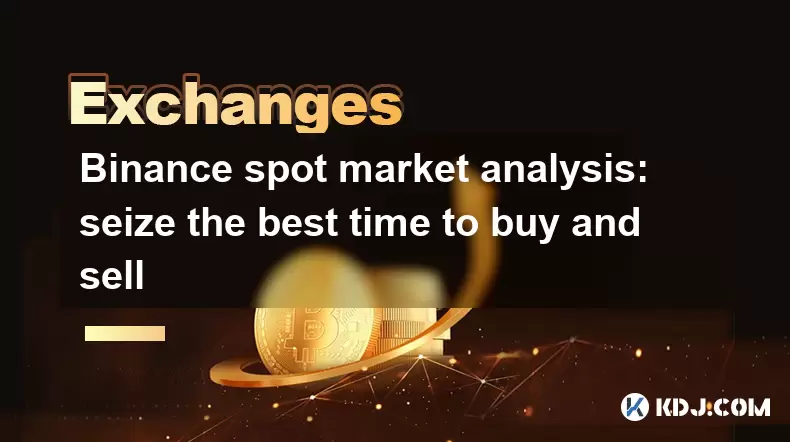
Binance spot market analysis: seize the best time to buy and sell
Jun 19,2025 at 04:56pm
Understanding the Binance Spot MarketThe Binance spot market is one of the most popular platforms for cryptocurrency trading globally. It allows users to trade digital assets at current market prices, making it essential for traders aiming to buy low and sell high. Unlike futures or margin trading, spot trading involves direct ownership of the asset aft...
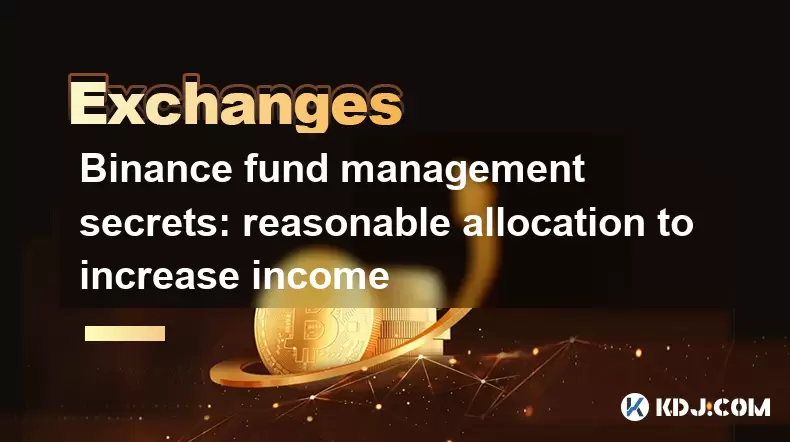
Binance fund management secrets: reasonable allocation to increase income
Jun 22,2025 at 02:29pm
Understanding Binance Fund ManagementBinance fund management involves strategic allocation of your cryptocurrency assets to optimize returns while managing risk. The key to successful fund management lies in understanding how different investment options on the Binance platform can be utilized to create a diversified portfolio. This includes spot tradin...

Binance trading pair selection skills: find the best buying and selling combination
Jun 23,2025 at 02:49am
Understanding the Basics of Trading Pairs on BinanceBefore diving into trading pair selection skills, it's essential to understand what a trading pair is. On Binance, a trading pair refers to two cryptocurrencies that can be traded against each other. For example, BTC/USDT means Bitcoin is being traded against Tether. Each trading pair has its own liqui...

Binance new coin mining strategy: participate in Launchpool to earn income
Jun 23,2025 at 11:56am
What is Binance Launchpool and how does it work?Binance Launchpool is a feature introduced by the world’s largest cryptocurrency exchange, Binance, to allow users to earn new tokens through staking. This platform enables users to stake their existing cryptocurrencies (such as BNB, BUSD, or other supported assets) in exchange for newly launched tokens. T...
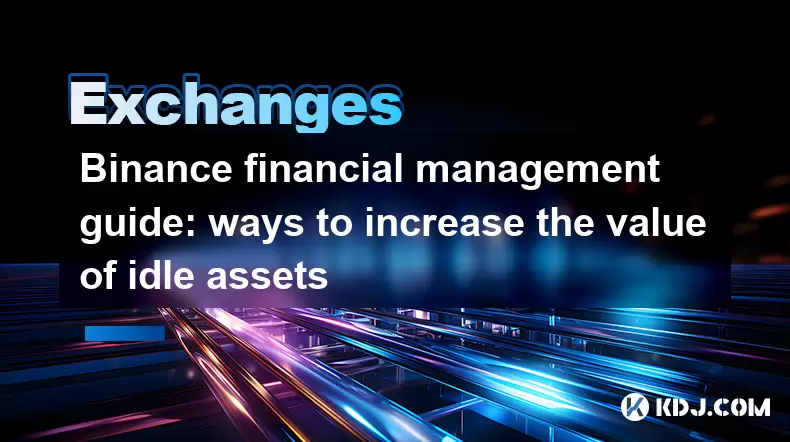
Binance financial management guide: ways to increase the value of idle assets
Jun 19,2025 at 11:22pm
Understanding Idle Assets in the Cryptocurrency SpaceIn the fast-paced world of cryptocurrency, idle assets refer to digital currencies that are not actively being used for trading, staking, or yield farming. Holding these funds in a wallet without utilizing them means missing out on potential growth opportunities. Binance, as one of the leading platfor...
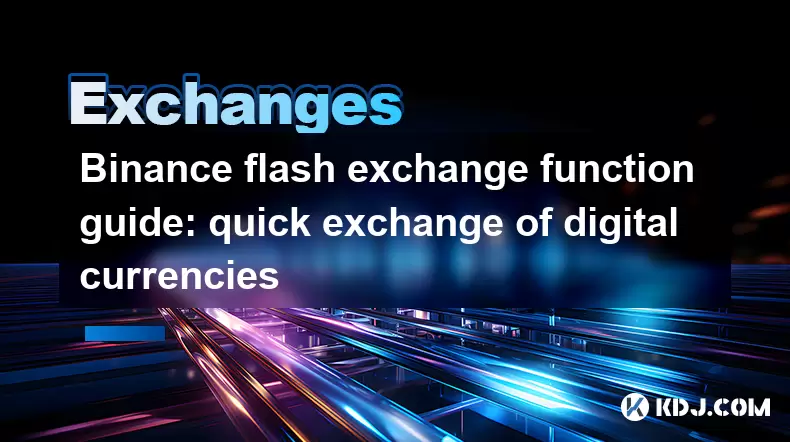
Binance flash exchange function guide: quick exchange of digital currencies
Jun 23,2025 at 12:29pm
What is the Binance Flash Exchange Function?The Binance Flash Exchange function is a powerful tool designed to allow users to instantly swap between supported cryptocurrencies without the need for placing traditional buy/sell orders. This feature simplifies the trading process by offering a direct exchange mechanism, eliminating the requirement to conve...

Binance spot market analysis: seize the best time to buy and sell
Jun 19,2025 at 04:56pm
Understanding the Binance Spot MarketThe Binance spot market is one of the most popular platforms for cryptocurrency trading globally. It allows users to trade digital assets at current market prices, making it essential for traders aiming to buy low and sell high. Unlike futures or margin trading, spot trading involves direct ownership of the asset aft...

Binance fund management secrets: reasonable allocation to increase income
Jun 22,2025 at 02:29pm
Understanding Binance Fund ManagementBinance fund management involves strategic allocation of your cryptocurrency assets to optimize returns while managing risk. The key to successful fund management lies in understanding how different investment options on the Binance platform can be utilized to create a diversified portfolio. This includes spot tradin...

Binance trading pair selection skills: find the best buying and selling combination
Jun 23,2025 at 02:49am
Understanding the Basics of Trading Pairs on BinanceBefore diving into trading pair selection skills, it's essential to understand what a trading pair is. On Binance, a trading pair refers to two cryptocurrencies that can be traded against each other. For example, BTC/USDT means Bitcoin is being traded against Tether. Each trading pair has its own liqui...

Binance new coin mining strategy: participate in Launchpool to earn income
Jun 23,2025 at 11:56am
What is Binance Launchpool and how does it work?Binance Launchpool is a feature introduced by the world’s largest cryptocurrency exchange, Binance, to allow users to earn new tokens through staking. This platform enables users to stake their existing cryptocurrencies (such as BNB, BUSD, or other supported assets) in exchange for newly launched tokens. T...

Binance financial management guide: ways to increase the value of idle assets
Jun 19,2025 at 11:22pm
Understanding Idle Assets in the Cryptocurrency SpaceIn the fast-paced world of cryptocurrency, idle assets refer to digital currencies that are not actively being used for trading, staking, or yield farming. Holding these funds in a wallet without utilizing them means missing out on potential growth opportunities. Binance, as one of the leading platfor...

Binance flash exchange function guide: quick exchange of digital currencies
Jun 23,2025 at 12:29pm
What is the Binance Flash Exchange Function?The Binance Flash Exchange function is a powerful tool designed to allow users to instantly swap between supported cryptocurrencies without the need for placing traditional buy/sell orders. This feature simplifies the trading process by offering a direct exchange mechanism, eliminating the requirement to conve...
See all articles

























































































